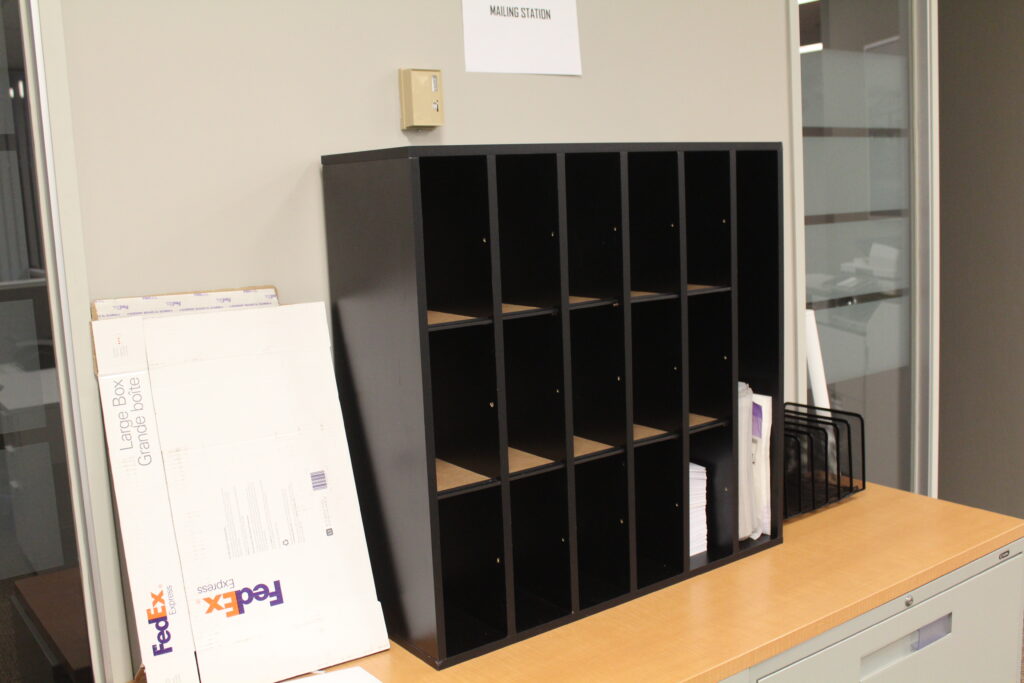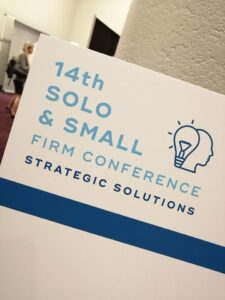Archive for June 2019
What makes the perfect office?
The Sole Practitioner’s Perfect Office
Today, we will be shifting our focus from law to psychology. It is no secret that where we work can shape how we work. So it is within the best interest of all sole practitioners to consider where they work. After all, if the environment around us can influence the way we work, would it not be in the best interest to put ourselves within an environment which can influence us or our work in the best possible way? This is precisely why today’s question is on what makes the perfect office for sole practitioners.
Perfection implies the fulfillment of one’s purpose and the maximization of one’s potential. The office, on the other hand, is the place that is meant for people to conduct their business and has the potential for bolstering the conduct of business. When these two definitions are amalgamated, we may better understand the meaning of the perfect office: a workspace designated for conducting business which contributes, as much as an office possibly can, to the maximization of how well business can be conducted.
So how can the quality of business processes be improved by an office? This can be answered by asking ourselves three simple sub-questions:
- Will I enjoy going to this office?
- Will my office boost my productivity?
- Will my office enhance the customer experience?
Enjoyment
Going to work can be quite difficult and exhausting when there is no enjoyment there. The challenges are exasperated further when the person going to work is solely responsible for the current and future position of their business. This is why it can be important that people enjoy what they do. Enjoyment keeps us awake. It makes us want to go to work. One of the factors that contribute to the greater enjoyment is the perfect office.
The perfect office is an office which brings us as much enjoyment as an office possibly can. This can vary depending on the person, but general psychological findings indicate that most people enjoy going to an office with a natural look. Here is an example of an office with a natural look:
These are pictures taken from the office of Wolf Law Chambers. What makes it nice to look at? One of the best explanations for this is called “soft fascination”, which is said to elevate our moods (as well as replenish our capacity for memory and creativity).
This is not to say that every sole practitioner should strive to replicate this exact office. It is to simply show how people generally gravitate towards offices with some natural lighting, plants, and a green scenery. But even if a natural look is not possible, then there is research which suggests that even reminders of nature can play a role in putting us at ease while also making it easier to connect with others. Examples include aquariums, fireplaces, plants, wooden furniture, etc. Feel free to be creative within a natural image.
Productivity
A beautiful office is worth nothing if it hinders or fails to improve productivity. An office must contribute to at least some productivity. This is where choice can play a significant role. The sole practitioners has a choice to organize their office the way they like. Research indicates that this can contribute quite effectively towards the worker’s well-being and productivity.
The technology within the office can also contribute to productivity. The test for this could simply be to observe how quickly someone can complete their tasks when they have a fast and well-structured information technology or information systems. It is almost guaranteed that the person with greater information technology and systems will be more productive than the one who has none, given that they use it properly. If used improperly, productivity may be seriously hindered. This is why even a messy desk can result in greater productivity if it is an organized mess. It is not so much about the tidiness of an office but the organizational systems which make for greater productivity.
Customer Experience
As they always say, customers come first. This is especially true for lawyers. One of the factors which can contribute to the experience of a client is their experience at the lawyer’s office. The natural look of an office can certainly help in improving the image of the lawyer. Another factor, that is not already mentioned in the enjoyment section, is the concept of curved furniture. Research indicators that people generally prefer curved furniture over sharp furniture when all is organized well.
Final Remarks
In the end, what matters most in an office is that it is enjoyable and is conducive to higher productivity and a better customer experience. It is important to make sure that going to work can be enjoyable. Otherwise, completing tasks can become more challenging than it has to be, which can affect productivity negatively. An office can also play an important role in the customer’s experience between the moment they walk in and the moment they walk out. Thus, it might help any sole practitioner to create the place where client experience is positive.
-Aaron Rajesh
Conflict of Interest
Introduction
It is the lawyer’s duty to act within the interest of their client(s). This seems easy to understand but can be quite complex when putting to practice. The purpose of this article is to help sole practitioners with the question of how to avoid situations of conflicting interests that harm their ability to do their job properly. This is important because, pursuant to section 3.4-1 of the Rules of Professional Conduct, “A lawyer shall not act or continue to act for a client where there is a conflict of interest…” (1) Since lawyers generally do not want to lose their clients due to a conflict of interest, it might be beneficial to know how to avoid conflicts that affect their judgment.
Conflict of Interest
The Law Society of Ontario stated that a conflict of interest means “the existence of a substantial risk that a lawyer’s loyalty to or representation of a client would be materially or adversely affected by the lawyer’s own interest or the lawyer’s duties to another client, a former client, or third person. The risk must be more than a mere possibility; there must be a genuine, serious risk to the duty of loyalty or to client representation arising from the retainer.” (2) So according to this definition a conflict of interest occurs when a lawyer’s loyalty and representation is hindered by the conflicting interests between the client and themselves, other clients, former clients, and other parties. This alludes to four categories of conflict:
- Personal Interest Conflict
- Current Client Conflicts
- Former Client Conflicts
- Conflicts arising from Duties to Third Persons
Personal Interest Conflict
A lawyer’s own interest is capable of harming client representation and loyalty. This is relatively easy to understand in abstraction. Though the factual matrixes that may arise in this context are virtually infinite, just as there are virtually infinite numbers between one and two, a few examples should suffice. A good example is provided by the Law Society of Ontario, who stated, “where a lawyer is asked to advise the client in respect of a matter in which the lawyer, the lawyer’s partner or associate or a family member has a material direct or indirect financial interest”, the lawyer’s interest can impair client representation and loyalty. (3)
Another simple example is when lawyers charge or accept fees or disbursements. Normally, it is within the interest of a buyer to pay as little as possible for a purchase while it is within the interest of a service provider or ‘seller’ to earn as much as possible. So naturally there is some degree of a conflict of interest when determining the appropriate price, for all transactions contain some degree of conflict. However, pursuant to section 3.6-1, “A lawyer shall not charge or accept any amount for a fee or disbursement unless it is fair and reasonable and has been disclosed in a timely fashion.” (4) This puts the client first, for if the lawyer is to be paid any fee or disbursement, then it must be fair, reasonable, and disclosed in a timely manner. If either of these necessary conditions are not met, whereby for instance the lawyer failed to charge a fair or reasonable fee against the client, then the lawyer ought be paid nothing in accordance with this section of the Rules of Professional Conduct.
Current Client Conflicts
A lawyer may have several clients. However, they may not have any clients whose interests are relevantly in conflict with another client’s. The exception will be addressed near the end of this article. An example of a strong rule against the representation of conflicting clients is the well-known section 3.4-3, which stipulates that “a lawyer shall not represent opposing parties in dispute.” (5) The rationale for this is quite clear: that “If the lawyer were permitted to act for opposing parties in such circumstances even with consent, the lawyer’s advice, judgment and loyalty to one client would be materially and adversely affected by the same duties to the other client or clients. In short, the lawyer would find it impossible to act without offending the rule in Section 3.4”, which is that lawyers may not act for a client where there is conflict of interest. Thus, since the lawyer’s obligation to loyalty and proper representation may be hindered by the circumstances, a lawyer shall not be permitted to act for opposing parties.
A less obvious example is where a lawyer attempts to divide the fees and disbursements between clients. Similar to the earlier example regarding the natural existence of conflicts in pricing interests between buyer and seller, clients may also be in conflict when a multiple of them are all interested in the ‘best price.’ To address this, section 6.4-4 may be applied, whereas the lawyer acting for multiple clients in the same matter should divide the fees and disbursements equitably between them unless they agree for otherwise.
In addition to these rules written by the Law Society of Ontario, the lawyer also has a common law fiduciary duty to act within the interest of their clients. In the case of Roth Estate v. Juschka, 129 O.R. (3d) 261, the Ontario Court of Appeal questioned whether a respondent lawyer breached his fiduciary duty to the appellants by acting for all parties where there was a conflict of interest and by failing to send them for independent legal advice. The respondent suggested a critical term in a transaction remain undocumented and perhaps unenforceable for the benefit of one client and to the detriment of another client. (6) The Court found the respondent liable to the appellants on the grounds that they breached their fiduciary duty and were negligent within the circumstance of conflicting interests. The lawyer failed to recognize the actual or potential conflict of interest between the clients which precluded him from acting for all clients. He also failed to ensure that the parties received independent legal advice.
Former Client Conflicts
Pursuant to section 3.4-10 of the Rules of Professional Conduct, “Unless the former client consents, a lawyer shall not act against a former client in (a) the same matter, (b) any related matter, or (c) … any other matter if the lawyer has relevant confident information arising from the representation of the former client that may prejudice that client.” (7) The decision in MacDonald Estate v Martin, [1990] 3 S.C.R. 1235 is a great example of this type of matter. In this case, Sopinka J. stated that “the test [for determining a disqualifying conflict of interest] must be such that the public represented by the reasonably informed person would be satisfied that no use of confidential information would occur.” (8) In other words, the reasonable person must be satisfied that no use of confidential information would occur. If there is no satisfaction in this regard, then disqualification is due.
There are two questions for applying this test: (i) whether the lawyer received confidential information attributable to a solicitor and client relationship relevant to the matter at hand; and if so, (ii) whether there is a risk that such information will be used to the prejudice of the client. (9) Once both questions were answered in the affirmative, the Court concluded that there exists a conflict of interest which risks the prejudice of the former client.
Conflicts Arising from Duties to Third Persons
In addition to themselves and clients, it is possible that lawyers may hold others’ interests before the client to the detriment of their proper practice through representation and loyalty. As an illustration, suppose that a lawyer may act as the director of a company while being a trustee. If the lawyer acts against such a corporation or trust on behalf of a client, there may be a conflict of interest. (10) If acting for such a corporation or trust may affect the lawyer’s judgment and obligations to the client who goes against the corporation or trust, then there is a serious risk that the lawyer may jeopardize the protection of lawyer and client privilege.
Other Considerations
Some may have noticed, from the above categories, that there is a major exception to the rule which prevents a lawyer from acting or continuing to act for a client or clients where there is a conflict of interest. (11) The main exception to note is consent. Pursuant to section 3.4-2, “A lawyer shall not represent a client in a matter when there is a conflict of interest unless there is consent, which must be fully informed and voluntary after disclosure, from all affected clients and the lawyer reasonable believes that he or she is able to represent each client without having a material adverse effect upon the representation of or loyalty to the other client.” (12)
If a lawyer is ever allowed to represent or continue representing a client where there is a conflict of interest, there must be fully informed and voluntary consent. If there is no consent, the removal of the lawyer may not be overridden by this section. So in practice, if a lawyer comes across a situation of conflicting interests, and if it is in their best interest to represent and continue to represent their client, it is in their best interest to ensure that they obtain fully informed and voluntary consent for their representation. Besides this, at all times, it is an obligation of the lawyer to avoid putting themselves, other clients, former clients, or third parties before their client.
(1) Law Society of Ontario, Rules of Professional Conduct, at s 3.4-1. https://lso.ca/about-lso/legislation-rules/rules-of-professional-conduct/complete-rules-of-professional-conduct
(2) Ibid at s 1.1-1.
(3) Commentary, Ibid at s 3.4-1.
(4) Ibid at s 3.6-1.
(5) Ibid at s 3.4-3.
(6) Roth Estate v. Juschka, 129 O.R. (3d) 261, at para 43.
(7) Law Society of Ontario, supra note 5, at s 3.4-10.
(8) MacDonald Estate v Martin, [1990] 3 SCR 1235, [1990] 3 RCS 1235, [1990] SCJ No 41, [1990] ACS no 41, 1990 CanLII 32, at para 44.
(9) Ibid at para 45.
(10) Law Society of Ontario, supra note 7, Commentary at s 3.4-1.
(11) Ibid at s 3.4-1.
(12) Ibid at s 3.4-2.
Wolf Law Chambers Lunch & Learn
What a turn out! We can honestly say that the Lunch & Learn at the Wolf Law Chambers was a success. Thank you to all who attended the event, and a special thanks to Praveen Srinivasan of uLawPractice for his informative and engaging presentation. We would also like to give a special thanks to Prime Asia TV for attending and conducting interviews. It was a real pleasure to have them.
Wolf Law Chambers, on June 6, 2019, hosted a Lunch & Learn for Sole Practitioners and Small Firms. The purpose of the event was to get to know other practitioners going through the same journey. The sense of community is very important to Wolf Law Chambers, and there is no better way to gain a sense of community than to meet new people and make new connections. For those who were unable to attend, we understand. There are plenty more events to come, for we are just getting started.
Wolf Law Chambers had the privilege of attaining Praveen’s attendance. He provided a great presentation on uLawPractice, a legal accounting software meant to make any lawyer’s accounting experience easier than it has to be. He walked everyone through the desktop and mobile interfaces. It was fascinating to see how innovative his company’s services are. Wolf Law Chambers recommends any practitioner to consider uLawPractice, for it can make a big difference in how lawyers conduct their business.
Wolf Law Chambers is a multidisciplinary law practice, providing professional legal services to clients in several areas of law, including corporate, commercial, family, immigration, criminal, and real estate. The ability for a lawyer to run their practice and be accessible to clients, while having the freedom and flexibility to make use of a larger firm’s resources is powerful. The encouragement and freedom to consult legal ideas with other lawyers within the same field or across different fields, leads to better and stronger representation of client interests.
Conveniently located near Hurontario and Hwy. 401 in Mississauga’s business cluster, our premier location is minutes away from the Superior Court of Justice, Small Claims Court, Provincial Offences Court, and Downtown Mississauga Square One area.
We recommend anyone to come visit us. Wolf Law Chambers will be happy to connect with you.
14th Solo and Small Firm Conference – A wonderful Sense of Community
Yesterday, on behalf of the Wolf Law Chambers, I had the privilege of attending the 14th Solo and Small Firm Conference held by the Law Society of Ontario. I was fascinated by how well the event was set and coordinated. The moment I walked into the conference hall at the Metro Toronto Convention Centre, I was welcomed by friendly and delightful people who made a big difference in how I approached the following hours. Indeed, the first impression was a good one. But was the remainder of the event as good or better? The answer is clear yes.
The event held multiple seminars which is well suited to help solo practitioners or small firms improve how they conduct their business. The opening plenary shed light into the fundamental principle for all practitioners in today’s society: be like the T-Shaped lawyer. These days, legal expertise alone is not enough for success. Lawyers must have, in addition to legal expertise, some important business skills. The concept of the T-Shaped lawyer and the ‘+’-Shaped lawyer was proposed as the ideal to strive towards.
The T-Shaped is a lawyer who not only has legal expertise but also has the ability to engage their practice with some design-thinking, data analytics, technologies, project management, and business processes and tools. The ‘+’-Shaped lawyer, on the other hand, is the lawyer who can do what a the T-Shaped lawyer can do but, in addition, has great interpersonal, intrapersonal, communication, and other soft skills which may positively impact how well practice and business are conducted. These concepts are used to support the claim that knowledge of the law alone is no longer enough to succeed as a solo practitioner or a small firm. There must be a balance of legal expertise, personability, and business skills.
It is refreshing to see that some Law Schools are understanding the importance of the T-Shaped lawyer, as Universities like Ryerson, Osgoode (York), and Calgary have implemented this concept by providing courses which build on skills beyond legal practice alone.
The first seminar I attended was great. It was on research tools for lawyers and how they may be adopted in practice. The seminar was hosted by two individuals: Mona Datt, founder of Loom Analytics; and Colin Lachance, interim General Manager of vLex.com in North America. As expected, they mainly promoted Loom Analytics and vLex, but they were more unbiased about their approach than I expected. Loom Analytics aggregates case law into descriptive information about the judicial actors of the aggregated cases. It is meant to provide a structured view of case law with respect to its actors. It provides users with services such as counsel analytics and judge analytics, which can be a controversial topic nowadays. Some view the service as unethical while others consider it fair play. These are certainly important views to consider. I just wonder which side is right.
vLex is promoted as a database that is better than CanLii. It is a research tool similar to the traditional tools of legal practice, but includes an intelligence called “Vincent”. When reading a case, Vincent is able to guide users to related cases, which can be of great importance when lawyers need to consider multiple cases on a particular issue or factual matrix. Another interesting feature is that users may drag and drop documents to query results in vLex. The document can lead the user to relevant cases based on the document presented. Once the query is complete, it is important to note that the document inputted is not tracked. This can be important for lawyers who require the maintenance of privacy.
The second seminar I attended was held by three individuals: Andrew Swales, of Next Generation Legal Accounting; Joyce Thomas, of Thomas Litigation; and Karissa Ward, of Wards Lawyers PC. They spoke on how to grow the law firm. What resonated with me most was the importance of creating a work environment which let current and future employees want to work for your firm. This can executed through fun events like Halloween decoration contests, escape rooms, hockey tournaments, etc. Personally, I would love to add Office Olympics to the list (please see “The Office” US). There are plenty of ways to have fun. Just make sure to also show the fun through a good website or through social media.
Another factor is clear communication. This can be implemented through a clear employment or partnership agreement. For retaining employees, clear understanding of career paths, recognizing strengths and weaknesses, and properly addressing mental health can play a large role in how well a business is conducted, which may be conducive to employment growth and employment retention.
There were lots of important information presented in this seminar, including proper accounting systems and the prediction of future liabilities. But my favourite presentation was on the fun part of work. It is important that a lawyer is not dead serious about life. Some fun is important too, and I am glad to have relearned this.
After the second seminar, I had a great lunch served by the Osgoode Hall Restaurant. What can I say? It was great. I took the opportunity to meet some wonderful people who are on unique journeys in life. It is good to know that even solo practitioner does not have to go through life and practice alone. There are Law Chambers that give people a sense of community which can be very important to the psyche of the lawyer. Counterintuitively, even when solo, we are not alone.
The third seminar was good too. I attended the marketing seminar hosted by Sandra Bekhor of Bekhor Management. She was quite engaging, and it was a pleasure to listen to her speak. It was clear that Bekhor enjoyed being there too. Some important topics were on websites, social media, and mailing. With regards to websites, it is important that they are clear, updated, and maintained. She also stressed importance of doing our best to ensure that we show up in page 1 of a general Google Search. With regards to social media, continuity is important. Like the previous speaker, Bekhor also emphasized that it is important to show how fun the workplace can be. Of course, it is also important to be productive. But fun is good. I began wondering how it would be to run a YouTube Channel, an Instagram page, a Linkedin page, etc. The third key marketing strategy pertained to mailing, where Bekhor emphasized the importance of waiting and making sure emails are perfect before being sent out.
Overall, I enjoyed the event. It was lively, informative, and fun. I met some wonderful people and I hope to see them again soon. As a member of the Wolf Law Chambers, I believe that the sense of community in the workplace is key, even for independent workers. This is why I enjoyed the conference too. It gave me a sense of community for sole practitioners and small firms.













